Cities of Great Britain
Cities of Great Britain
Cities and Thrones and Powers
Stand on times eye
Almost as long as flowers,
Which daily day:
But, as new buds put forth
To glad new men,
Out of the spent and unconsidered Earth
The cities rise again.
(Rudyard Kipling)
London – the capital of the United Kingdom of Great Britain and Northern Ireland
London is the capital of Great Britain, its political, economic and cultural centre. It is one of the largest cities in the world. Its population is more then 11 000 000 people. London is situated on .the river Thames. The city is very old and beautiful. It was founded more than two thousand years ago. Traditionally London is divided into several parts: the City, the Westminster, the West End and the East End. The City is the oldest part of London, its financial and business centre. The Westminster is the aristocratic official part of London. It includes Buckingham Palace, where the Queen lives, and the Houses of Parliament. The West End is the part, where rich people live. It is the most beautiful part of London. The best hotel, restaurants, shops, clubs, parks and houses are situated there. The East End is an industrial district of London. There are many factories and the Port of London there. London has many places of interest. One of them is the Houses of Parliament, the seat of
_____________________________________________________________
1. O. Karpenko “Focus on Great Britain” – Kharkiv Publishing house “Ranok” – 2006, p. 31
the British Government. There one can see the famous Tower Clock Big 2 Ben, the symbol of London. 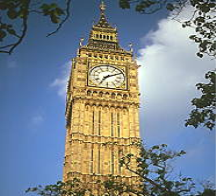
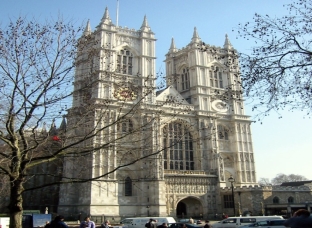 Big Ben is the real bell which strikes every quarter in hour. Another place of interest is Buckingham Palace. It’s the resident of the Queen. There many other places of interest in London: Trafalgar Square, Regents Park, Westminster Abbey and, of course, the British Museum. It’s impossible to describe all places of interest. The best way to know London is to visit it.
Big Ben is the real bell which strikes every quarter in hour. Another place of interest is Buckingham Palace. It’s the resident of the Queen. There many other places of interest in London: Trafalgar Square, Regents Park, Westminster Abbey and, of course, the British Museum. It’s impossible to describe all places of interest. The best way to know London is to visit it.
Westminster Abbey
The Houses of Parliament
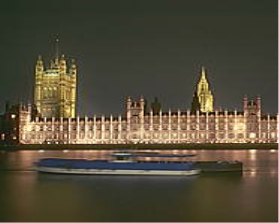
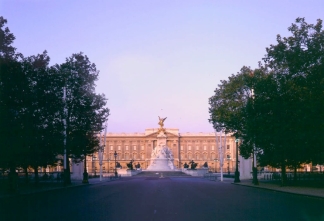 3
3
Buckingham Palace
__________________________________________________________
2. English topics: Найкращі 1000 усних тем з паралельним перекладом для учнів 5 – 11 класів – Харків « Веста»,2006 –с.146
3. Большая энциклопедия Кирилла и Мефодия 2004 – CD (I)
History of London
London is an old city. It grew up around the first point where the Roman invaders found the Thames narrow enough to build a bridge. There has been a “London Bridge” in the same area ever since. They founded a Celtic settlement then known as Londinium and later they had turned it into a large port and important trading centre with a long wall of stone and brick. Inside the wall low houses were built with bright red roofs. The Tower of London was founded by Julius Caesar 4 and in 1066 rebuilt by William the Conqueror. It was used as fortrees, a royal residence and prison. Now it is a museum and also the place where Crown Jewels are kept. Time passed. London grew and became a great city. The coming of the railway changed London for ever. The first underground railway was opened in 1863 between Paddington and the City. Today London is the capital of Great Britain and Northern Ireland. It is one of the most beautiful cities in the world. There are many places of interest in it and this city is well worth visiting.
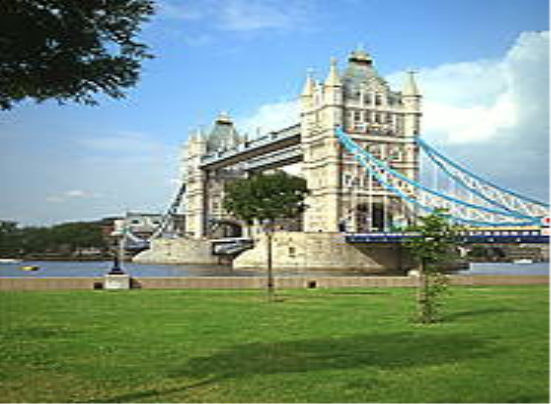
Tower Bridge
4. G. D. Tomakhin “England”- journal “ Foreign Languages at school” –Moscow “Education” -1989, #3 –p.87
Places of interest in London
There a lot of places of interest in London. Among them there are: Westminster Abbey, the Houses of Parliament, Buckingham Palace, St Paul’s Cathedral, London Bridge, and the Tower of London. London stands on the river Thames. Crossing the river by the Tower Bridge you can see the Tower of London.
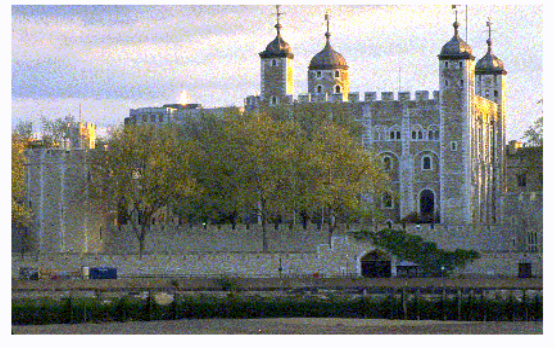
The Tower of London 5
It is one of the oldest buildings of the city. Many centuries ago it was a fortrees, a royal palace and then a prison. Now it is museum of arms. On the bank of the Thames, not far from the Tower of London, you can see Westminster Palace, or the Houses of Parliament. It is the seat of the British government and it is one of the most beautiful buildings in London. In one of its towers there is famous Big Ben, the largest clock of England. It strikes every quarter of an hour. Buckingham Palace is the Queen’s official London residence. Tourists always go to see the ceremony of changing the Guard there. London has many fine squares. Some of them are quiet; others are busy like Trafalgar Square.
5. O. Karpenko “Focus on Great Britain” – Kharkiv Publishing house “Ranok” – 2006, p. 32
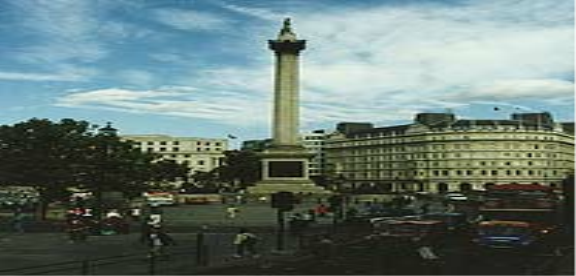
Trafalgar Square 6
Trafalgar Square is the central square of the city. To the right of the square there is the National Gallery which has a fine collection of European painting. St Paul’s Cathedral is the biggest English church. Another famous church is Westminster Abbey where kings, queens, and many famous people are buried.7 London is also famous its beautiful parks. Hyde Park is the most democratic park in the world, as anyone can say anything he likes there. Regent’s Park is the home of London Zoo.
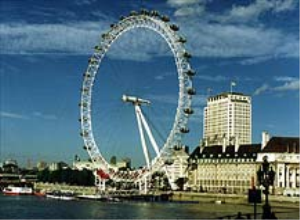
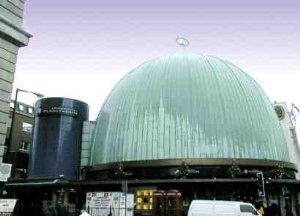
Planetarium The circle of Millennium
__________________________________________________________
6. Большая энциклопедия Кирилла и Мефодия 2004 – CD (I)
7. G. D. Tomakhin “England”- journal “ Foreign Languages at school” –Moscow “Education” -1989, #3 –p.89
Main Theatres in London
There four theatres in London of notable beauty: the Theatre, the Curtain Theatre, and the Rose Theatre and the Swan Theatre. In each of them a different play is daily performed to the audience. Of all the most magnificent is the Swan Theatre: for it accommodates three thousand people. It is built of a mass of flint stones, and is supported by wooden columns painted in such an excellent imitation of marble that it is able to deceive even the most cunning people. The actual date of the building and opening, but it was probably about 1596.Built by Francis Landley the Rose Theatre was probably opened in 1597.The Theatre — the first and most appropriately named playhouse way erected in London 1576. Build by James Burbage the Curtain Theatre was London’s second playhouse, opened in 1577, the year after Theatre.8 There is no definite information as to who built it. Every day at two o’clock in the afternoon in the city of London 2 or 3 comedies are performed at separate places. The places are built so that the actors act on a raised platform, and everyone can see everything well enough.
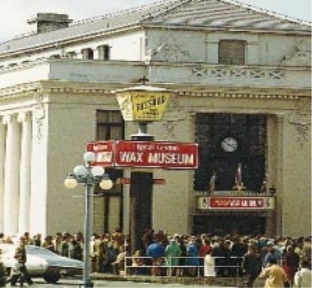
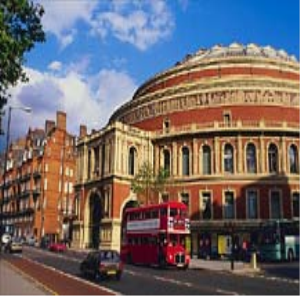
Royal Albert Hall
______________________________________________
8. Encyclopedia Britannica -2006, CD
Shopping in London
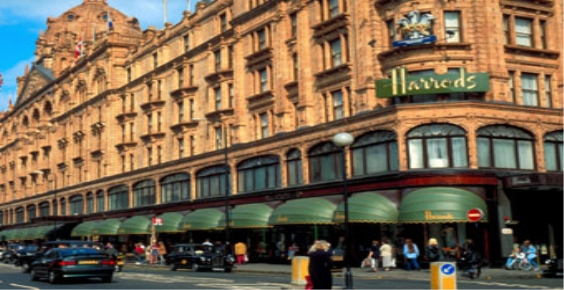 Harrods is probably the world’s most famous shop. For Londoners, there is a love-hate relationship: most say they hate it but then assure you it is the best place for silk socks, toys, flowers or whatever. Its 230 departments on five floors spread over twenty acres where 4 000 staff serve 50 000 customers. There are six restaurants, five bars, a library, bank, pet shop, drycleaners, everything from Indian cigarettes to domestic equipment to buy, a ticket agency and departments for christening, weddings and funerals. Not content with selling everyone else’s goods, Harrods own-make goods fill an in-house shop and Harrods green buses do London tours. Henry Charles Harrod, a tea merchant, founded the institution with a small grocery shop and was a small grocery shop and was pleased if his weekly takings were 20 pounds. But some years later his son had takings 1 000 pounds a week and lost everything in the fire.9 Then he wrote to his customers„: I greatly regret to inform you, that in consequence of the above premises being burnt down, your order will be delayed in the execution for a day or two”. Such service drew more buyers. In 1901 the store was designed with mosaic friezes and tiles in the Food Halls. At all times there are so many people in the store that it is easy to lose the way. I information desks inside most will help you to find your way in the stores as well as „The Store Guide”.
Harrods is probably the world’s most famous shop. For Londoners, there is a love-hate relationship: most say they hate it but then assure you it is the best place for silk socks, toys, flowers or whatever. Its 230 departments on five floors spread over twenty acres where 4 000 staff serve 50 000 customers. There are six restaurants, five bars, a library, bank, pet shop, drycleaners, everything from Indian cigarettes to domestic equipment to buy, a ticket agency and departments for christening, weddings and funerals. Not content with selling everyone else’s goods, Harrods own-make goods fill an in-house shop and Harrods green buses do London tours. Henry Charles Harrod, a tea merchant, founded the institution with a small grocery shop and was a small grocery shop and was pleased if his weekly takings were 20 pounds. But some years later his son had takings 1 000 pounds a week and lost everything in the fire.9 Then he wrote to his customers„: I greatly regret to inform you, that in consequence of the above premises being burnt down, your order will be delayed in the execution for a day or two”. Such service drew more buyers. In 1901 the store was designed with mosaic friezes and tiles in the Food Halls. At all times there are so many people in the store that it is easy to lose the way. I information desks inside most will help you to find your way in the stores as well as „The Store Guide”.
Shop„Harrods”
9. Большая энциклопедия Кирилла и Мефодия 2004 – CD (I)
Stratford-upon-Avon
It is an unremarkable market town for one little detail; in 1564, the wife of local merchant, gave birth to William Shakespeare, probably greatest writer ever to use the English language.
There was no theatre in Stratford in Shakespeare’s days – it was not until 1769 that Stratford organized any event in honour of him, and that was a festival put together by London- based actor- manager David Garrick, which featured no dramatic performances at all. From then on, the idea of building a permanent home in which toper form Shakespeare’s works grew in strength. The first memorial Theatre opened in1879, on land donated by local beer magnate Charles Flower,
Who also funded the project?
After a fire in 1926 the competition held ford replacement was won by the only woman applicant, Elizabeth Scott. Her theatre, overlooking a beautiful scene of meadows and willow trees on the northern banks of the Avon, is today the Main House. At the back stands the burnt-out original theatre, named the Swan. It is used for works by Shakespeare’s contemporaries. A third auditorium, The Other Place, shows modern and experimental plays.
At the Royal Shakespeare’s Company works on a repertory system, you could stay in Stratford for a few days and see four or five different plays. During the day you can visit the Shakespeare’s Centre and Birthplace Museum, Anne Hathaway’s Cottage (the home of the woman who in 1582 became Shakespeare’s wife) or go on a backstage tour.
Windsor
Windsor is situated not far from London. It takes about 45 minutes to get from London to Windsor. Situated on the Thames, Windsor provides boating for the summer months. There are two Windsors — Old Windsor and New Windsor. The Old Windsor existed long before William the Conqueror. New Windsor grew up with the famous castle, one of the oldest and most beautiful historical monuments. It is built in Norman style and is closely connected with the national history. For over 800 years Windsor has been the residence of the Kings And Queens of England.
Liverpool
Liverpool is known as a birthplace of Beatles and one of the world’s greatest seaports. Liverpool first attained importance in the 17th century with the growth of trade with American colonies. During the 18th century it became the main centre of the slave trade. Nowadays it is known as an exporting centre for the textiles of the north of England.
Coventry
Coventry is one of the oldest cities in England. It lies about 40 kilometers west London and has a population of about 350 000 people. It is a large industrial centre and the birthplace of motor industry. During the World War Second it suffered badly: one third of the city was destroyed by German bombs. Thousand of people were killed. At present Coventry has been much rebuilt. Of great interest is its famous Cathedral. The old city Cathedral was ruined during the war. A new modern Cathedral has been built nearby. But the Ruins of the old Cathedral are kept to remind younger generation about the war.
Birmingham
Birmingham is the second biggest city in Britain. One million people live here. It’s a big industrial centre situated in the central part of England called the Midlands. Nearly all the main towns of the Midlands are close together. They form the „Black Country” with numerous factories and coal mines. People call Birmingham „The city of 1500 trades” as all the pins and needles, spoons and forks, TV sets and computers, motor-cars and bicycles have come from Birmingham. The University of Birmingham is proud of its departments of science, arts, medicine, commerce and law. 11 In 1890, Dvorak on visited to Birmingham wrote to a friend: “I am here in this immense industrial city where they make excellent knives, scissors, springs, files and goodness knows what else and besides these, music too. And how well! It’s terrifying how much these people here manage to achieve”.
11. N. Mel’nychuk “The Big Heart of English”-Kyiv “English”,2004-p.15
Manchester
Manchester is the second largest city in Lancashire after Liverpool. It’s an industrial capital of the North of England and one of the most important business centers after London. Manchester is the most important business center of cotton industry because of good damp climate and coal fields nearby. The city is 35 miles from the sea but it is the third largest part in Britain. The Manchester Ship Canal connects it with the city. Manchester is very old city. There are many beautiful buildings in Gothic style in it, such as the Town Hall, Manchester University and the Central Library. It was the first city to build an airport in 1929. 5 Many pop and rock bands come from Manchester, which is known for its music industry and many nightclubs. It is also known for its two football teams – Manchester United and Manchester City.
12
Cambridge
City in England, on the river Cam (a river sometimes called by its earlier name, Granta), 80 km north of London; population in about 120000.
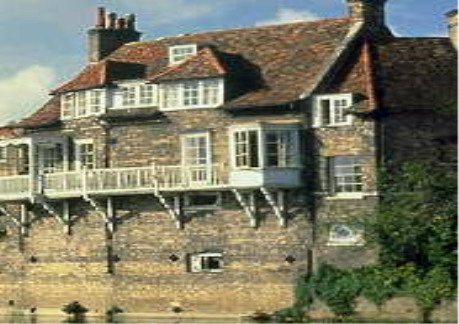
The view of the city 12
It is the administrative headquarters of Cambridgeshire. The present-day city is centred on Cambridge University (founded 12th century). Industries include the manufacture of scientific instruments, radios, electronics, paper, flour milling, fertilizers, printing, and publishing.
As early as 100 B. C., a roman settlement grew up on a slight rise in the low-lying plain, commanding a ford over the river. Apart from those of Cambridge University, fine buildings include St Benet’s church, with a Saxon tower (about A. D. 1000), the oldest building in Cambridge; Round Church (about 1130), the Guildhall (1939). The Fitzwilliam Museum (1816) houses a fine art collection.
University colleges include Peterhouse, founded 1284, the oldest college; King’s College 1441; Queen’s College 1448; Jesus College 1496; St John’s College; and Trinity College 1546, the largest college. Emmanuel College chapel was built by Sir Christopher Wren in1666. Among the treasures of the university library (built 1931― 1934) is the first book ever printed in English.
__________________________________________________________
12English topics: Найкращі 1000 усних тем з паралельним перекладом для учнів 5 – 11 класів – Х.: Веста: Вид – во „Ранок”,с. 608.
13. Encyclopedia Britannica -2006, CD
Oxford 14
University city and administrative centre of Oxfordshire in south central England, at the confluence of the river Thames (called the Isis around Oxford) and Cherwell; population about 125 000.
Oxford University has 36 colleges, the oldest being University College (1249). Industries include motor vehicles at Cowley, steel products, electrical goods, paper, publishing, and English schools. Tourism is important.
Features
Christ Church cathedral (12th century), the Divinity School and Duke Humphrey’s Library (1488), the Ashmolean museum (1845). Other museums include the University Museum, designed by Benjamin Woodward 1855―1860, the Pitt-Rivers Museum, and the Museum of Modern Art. Merton College has the 14th century Mob Quad and library; St John’s College has the Canterbury Quad (1636) and gardens lay out by „Capability” Brown; 17th-century Bodleian Library. The Bate Collection of Historical Instruments is housed at the Faculty of Music. On 1 May (May Morning) madrigals are sung at the top of Magdalen College tower. St Giles fair takes place every September.
History
The town was first occupied in Saxon times as a fording point, and is first mentioned in written records in the Anglo-Saxon Chronicle of 912. The University of Oxford, the oldest in England, is first mentioned in the 12th century, when its growth was encouraged by the influx of English students expelled from Paris in 1167.
Most of the university’s buildings were built during 15th, 16th, 17thcenturies. Oxford’s earliest colleges were University College 1249, Balliol 1263, and Merton 1264. During the Civil War, the university supported the Royalist cause while the city declared for Parliament. Oxford became the headquarters of the king and court in 1642.
After the Restoration the university settled down into the ease of the 18th century, interrupted only by political disputes and the Methodist movement. By the beginning of the 20th century, the city had experienced rapid expansion and industrialization, and printing and
publishing industries had become firmly established. In the 1920s the English industrial magnate William Morris (1877-1963), later Lord Nuffield, began a motor-car industry at Cowley, just outside the city, which became the headquarters of the Austin-Rover group.
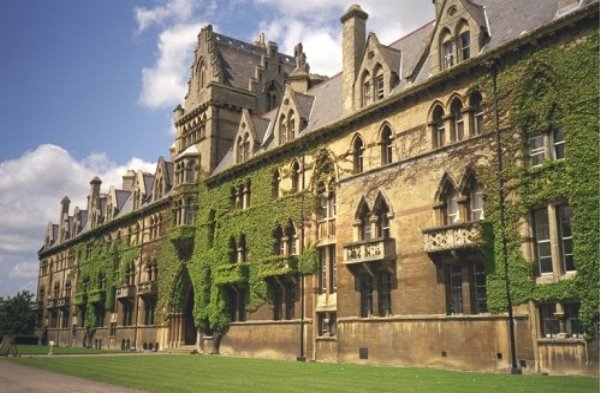
Christ Church
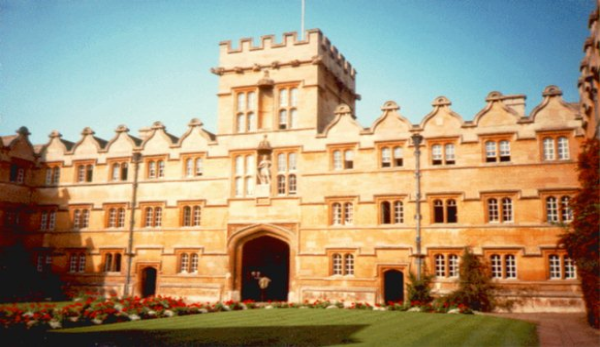
University College
_____________________________________________________________________________
14 G. D. Tomakhin “England”- journal “ Foreign Languages at school” –Moscow “Education” -1989, #3 –p.89
Edinburgh
Capital of Scotland and unitary authority, near the southern shores of the First if Forth; population about 450 550; area 261 sq km. industries include printing, banking, insurance, chemical manufactures, electronics distilling, brewing. Edinburgh International Festival of Music and Drama, begun in 1947, is the largest in the world. The university was established in 1583.
Edinburgh Castle contains the 12th century St Margaret’s chapel, the oldest building in Edinburgh.15
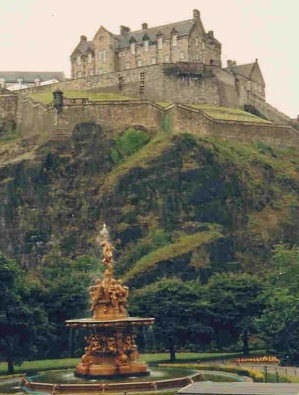
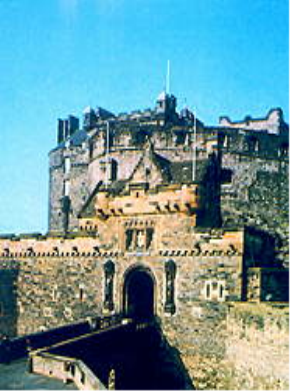
Edinburgh Castle
The Palace of Holyrood House was built in the 15th and 16th centuries on the site of 12th-century abbey; it is the British sovereign’s official Scottish residence. The Parliament House, begun in1632, is now the seat of the supreme courts. The Royal Scottish Academy and the National Gallery of Scotland in Classical style are founded by William Henry Playfair (1789-1857). The episcopal cathedral of St Maria, opened in1879.
15. Encyclopedia Britannica -2006, CD
Glasgow
Glasgow is one of Britain’s most important industrial centers. Large and fine ships are built in or near Glasgow. It is a beautiful city on the
River Clyde. The river Clyde for Glasgow is like the Thames for London. The Scottish people say, „Glasgow made the Clyde and the Clyde made Glasgow”. And it is true. People made the Clyde deeper to take large ships into the heart of the city. So, Glasgow made the Clyde. And thanks to the Clyde, Glasgow became one of the biggest seaports. There many places of interest in Glasgow. Its university, for example, founded in the 15th century is an impressive high building. It can be seen from many miles away.
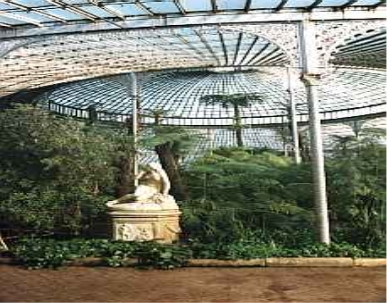
Botanic gardens inside
Cardiff
Seaport and capital of Wales from 1995 and administrative headquarters of Cardiff unitary authority, at the mouth of the Taff, Rhymney. And Ely rivers; population about 290 000.
Industries include car components, flour milling, ship repairs, paper and cigars. 13Cardiff was the site of Roman fort and during the Roman conquest a castle was built here.
The city dates from Roman times, the later town being built around a Norman Castle. The castle was a residence of the earls and marquesses of Bute from the 18th century and was given to the city in 1947 by the 5th marquess. Coal was exported until the 1920s. As coal declined, iron and steel export continued to grow, and an import trade in timber, tobacco, and meat citrus fruit developed. The docks on the Bristol Channel were opened in 1839 and greatly extended by the 2nd marquess of Bute (1793-1848).16 They have been redeveloped for industry.
Belfast
City and industrial port in Country Antrim and Country Down, Northern Ireland, at the mouth of the river Lagan on Belfast Lough; the capital of Northern Ireland since 1920.
It is the country town of Country Antrim. Since 1968 the city has been heavily damaged by civil disturbances, until the peace accord in 1994. Population about 290 000. The main industries are: shipbuilding, engineering, textiles linen and fertilizers.
History
Belfast grew up around a castle built in 1177 by John de Courcy. With the settlement of English and Scots, Belfast became a centre of Irish Protestantism in the 17th century. An influx of Huguenots after 1685 extended the linen industry, and the 1800 Act of Union with England resulted in the promotion of Belfast as an industrial centre. It was created a city in 1888, with a lord mayor from 1892.
16. G. D. Tomakhin “England”- journal “ Foreign Languages at school” –Moscow “Education” -1990, #3 –p.92
Literature
1.Большая энциклопедия Кирилла и Мефодия - 2004, CD
2.Encyclopedia Britannica -2006, CD
3.English topics: Найкращі 1000 усних тем з паралельним перекладом для учнів 5 – 11 класів – Х.: Веста: Вид – во „Ранок”, 2006
4. Karpenko “Focus on Great Britain” – Kharkiv Publishing house “Ranok”, 2006
5.G. D. Tomakhin “England”- journal “ Foreign Languages at school” –Moscow “Education” -1990, #3
6. G. D. Tomakhin “England”- journal “ Foreign Languages at school” –Moscow “Education” -1989, #3
7.N. Mel’nychuk “The Big Heart of English”-Kyiv “English”,2004


про публікацію авторської розробки
Додати розробку
